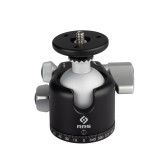
BH-40 Ball Head
Starting at
$378.00
Downloads
find your perfect setup

Colors Available
$33.00

BH-55 Ball Head
Colors Available
$453.00

BH-25 Ball Head
Colors Available
$180.00

BH-30 Ball Head
Colors Available
$305.00

Micro Panning Ball Head
Colors Available
$200.00



























